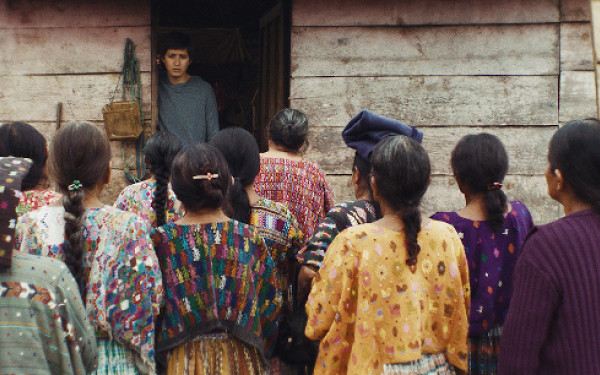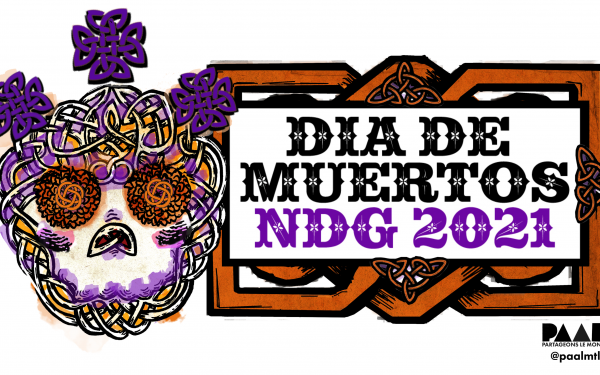The Hunt Begins Again
Canada’s Earliest Film Restored and Presented at Concordia
In The Land of the Head Hunters is a 1914 silent film that lingers between the genres of documentary and fiction. Written and directed by American photographer Edward S. Curtis, the motion picture showcases the Kwakwaka’wakw culture while focusing on a fictional plot. Recognized as the earliest surviving motion picture made in Canada, it was selected in 1999 for preservation at the National Film Registry of the Library of Congress due to its cultural, historical and aesthetic significance in cinema.
For his first full-length feature film, the photographer collaborated with ethnographer George Hunt, the consultant of anthropologist Franz Boas. Together they staged a melodramatic love story, set in pre-colonial time, about Motana, the son of a great chief of Kwakwaka’wakw, who dreams of wedding the beautiful Naida. However, the young girl is wooed by the village’s sorcerer, who eventually kidnaps her and triggers a Trojan-like war.
The film features an entirely indigenous cast—a first in cinematic history. Curtis’ goal was to combine art with anthropology and transform ethnographic footage into mass entertainment. He also wanted to create a popular movie that could help him finance his parallel photographic series that documented, in a primitive mode, the Indigenous population across Canada and the United States.
Last Friday, the film was screened at Concordia University’s Speaking of Photography lecture series hosted by guest speaker Aaron Glass, Assistant professor at the Bard Graduate Centre in New York City. The scholar presented a restored edition of Curtis’ movie that was renovated by Glass himself with the collaboration of Brad Evans, professor at Rutgers University, and Andrea Sanborn, director of the tribe’s U’mista Cultural Centre in Alert Bay, British Columbia. The film has also been restored by UCLA Film & Television Archives in association with the Field Museum of Natural History and Milestone Film & Video.
“The film premiered in New York and Seattle in 1914. Critics responded well to the film, but audience did not. Despite limited distribution it was a financial flop and was quickly forgotten,” explained Glass.
Despite its mass unpopularity, In the Land of the Head Hunters influenced documentary filmmakers of the period, such as Robert Flaherty, who picked up some of Curtis’ cinematographic tricks for his 1922 film Nanook of the North, which is considered the first ethnographic documentary. However, Curtis’ project was artistically ambitious because it featured elaborate tints and tones and an original music score composed by musician John Joseph Braham.
“Soon after this flop, Curtis sold his print of In the Land of the Head Hunters with copyright to the Museum of Natural History in New York. Franz Boas advised the museum to keep the ceremonial and dance footage of the Kwakwaka’wakw and scrap the love story for education lectures on North West coast Indians,” Glass explained.
“However, the museum did nothing with the film until they lost the print completely. The film could have been lost altogether, but in the 1930s a film collector gave a damaged print to a local museum salvaged from a Chicago dumpster. They transferred the film to a 16mm safety film, destroying the original colour of the nitrate film. The beginning and end were missing and no one knew exactly where these segments were.”
It wasn’t until the 1960s that field curator George Quimby and art historian Bill Holm decided to reconstruct Curtis’ film based on collected archival material. In 1974, Quimby and Holm released their version called In the Land of the War Canoes, arguing that Curtis in fact produced the first documentary film and not Flaherty, as was typically thought.
“Their editorial changes were quite significant,” Glass said. “They changed the title to make it less sensational. They rewrote the intertitles to cover missing or damaged film. They reduced the frames to focus ethnographically on the cultural context and play down the melodramatic story line. Most significantly, they recorded a new soundtrack to replace the musical score […] they wanted to simulate a sync sound film, as audio that was recorded with image in 1914 but that was impossible for the time, implying an observational documentary common in the early 1970s.”
In 2006, Glass and his colleagues intervened to restore In The Land of The Head Hunters. They sought to recover the film’s original romantic sensationalist plot, spectacular framing and commercial overstatement. They also wanted to re-frame the film according to Kwakwaka’wakw’s memories of the film’s production.
This version acts also as an intervention to cease the repetitive scholarly debate over Curtis’ ethics, colonial representation that salvages primitivism and the questioning of the authenticity of the photographer’s image. Despite all these arguments conveying a degree of truth, Glass’ version wants viewers to focus on the social, historical, personal, cultural and intercultural context of the production.
“The intention was not to replace In The Land of War Canoes, but to supplement and implement new archival discoveries, to glimpse more clearly at the film that Curtis and the Kwakwaka’wakw made together in 1914,” Glass said. “Our reconstruction returns to the original title and intertitle cards and restored the coloured-tinting based on surviving nitrate reels.
“In addition a number of still images, from original Library of Congress, were used to fill in for missing footage. It also provides screen time for the surviving musical score. This film is still incomplete but it provides a sense of what the audience saw and heard exactly a century ago,” he continued.
Despite the film’s accurate portrayal of the Kwakwaka’wakw, many of the rituals featured were re-contextualized for Curtis’ camera since the film was produced when Canada’s assimilationist policies meant many indigenous traditions were outlawed.
The photographer erased signs of modernity to give the impression of Native subjects living in a traditional past, in spite of the fact that by 1914 many indigenous populations were affected by modernity, residential schools, mercantilism and overall colonial imperialism.
The film is currently distributed by Milestone Films.

1_900_530_90.jpg)
2_900_502_90.jpg)
_600_832_s.png)




